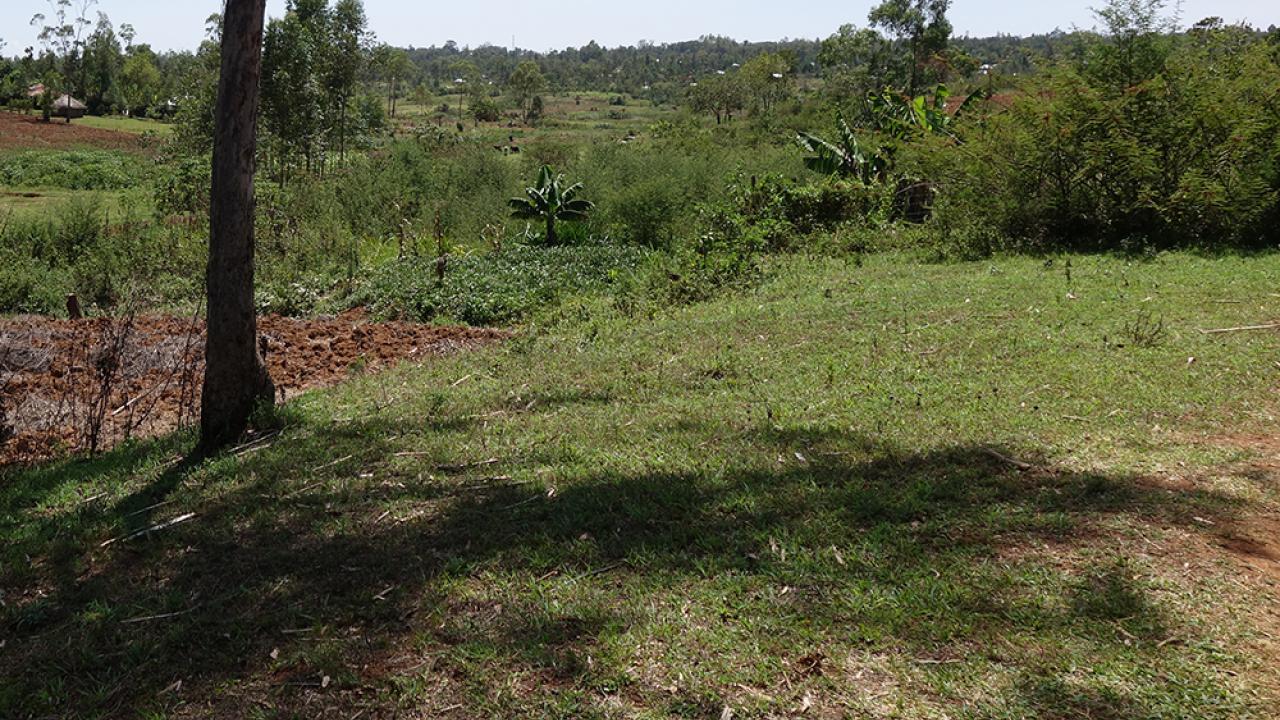
The shift from subsistence farming to producing higher-value products for national markets is for many the first step out of poverty. However, many farmers lack the financial resources to make initial investments in equipment that can make that transition possible.
MRR Innovation Lab researchers are partnering with Nyala Vision Savings and Credit Cooperative in Kenya to test financial contracts for rain collecting water tanks, including a layaway savings plan, an asset-collateralized loan and a hybrid option that enables farmers to save towards the loan’s deposit.
Project overview
Lead Principal Investigators: Emily Breza, Harvard University
Project Partners: Innovations for Poverty Action, Nyala Vision SACCO, Precision Agriculture for Development
Development Innovation: Asset-collateralized loans
Commodity: Dairy
Targeted Population: Small-scale dairy farmers
Country/Location: Kenya
Timeline: 2020-2025
Funding: $566,600 (USAID)
The Challenge
Investing in equipment is an important step for small-scale, subsistence farmers in their transition to producing higher-value products for sale on the national market. This transition is the first step out of poverty for many smallholder farmers, but many farmers lack the financial resources to make the initial investment.
For example, water tanks to collect rainfall can make dairy farming more productive. However, traditional microfinance loans are not structured for financing this kind of purchase for small-scale farmers who have little savings or assets. Traditional loans are often securitized with cash upfront and must be paid off starting immediately.
By contrast, asset-collateralized loans only require a small deposit with the asset itself as collateral. While traditional microfinance loans have had a disappointing impact on business investment and growth,[1] asset-collateralized loans, though riskier for lenders than traditional loans, have shown tremendous potential in facilitating business investment in developing countries.[2]
Layaway saving contracts provide an alternative for financing large agricultural purchases. Layaway contracts, in which the financial institution provides the purchased asset once payments into a dedicated account are complete, provide a softer commitment with lower risk for both borrowers and lenders.

Research Design
This MRR Innovation Lab research team is partnering with Nyala Vision Savings and Credit Cooperative (SACCO) in Kenya to test innovations in asset-collateralized loans for dairy farmers to invest in equipment to improve their productivity. Nyala is investing over $400,000 of their own capital to finance the sale of rainwater harvesting tanks to approximately 1,875 dairy farmers through variations on the asset-collateralized loans they currently offer their members.
In the first phase of this project, the research team is comparing the impacts of three variations of the loan contract Nyala currently offers:
- asset-collateralized loans as they are currently offered at Nyala, in which the borrower must pay the required security deposit upfront
- a layaway savings plan in which the farmer receives the water tank only after saving the total amount in a targeted savings account
- a hybrid contract in which borrowers save toward the required security deposit in an account specifically linked to the contract, at which point they can receive the asset and convert to an asset-collateralized loan.
Nyala is offering 1,550 asset-collateralized loans, 1,550 layaway offers and 1,550 hybrid contracts. Half of farmers who accept the layaway contract will be offered to upgrade to an asset-collateralized loan. The team will test pricing with discounts on water tanks to half of borrowers. To test different loan terms, half of participants will receive a two-year contract, while the remaining will receive a three-year contract.
The team is evaluating how the water tanks affect a range of business and welfare outcomes. In addition to changes in milk sales and farming practices, the team is measuring changes in health, time use and responsibilities within the household, gender and household dynamics, as well as whether community water usage differs between those who own tanks and those who do not.
During the project’s second phase, the research team is working with lenders across Kenya to introduce asset-collateralized loans on a limited basis to catalyze broader adoption of Nyala’s lending model. By working with multiple local lenders, the team will test the potential for scale while limiting the capital at risk with any one lender
Development Impact
This project builds on a relationship between the researchers and Nyala SACCO that began with a 2010-2014 evaluation of 1,159 asset-collateralized loans. In Kenya, Nyala has since instituted these loans on its own. In Rwanda, the Agricultural Board has begun piloting this model in partnership with J-PAL and IPA.
In the near term, this project will inform Nyala’s lending practices. At a broader level, this research will provide evidence on the viability of asset-collateralized loans as a financial tool for small firms in low-income countries. This will improve financial inclusion through products that better serve clients while helping to determine whether asset-collateralized loans should be scaled further.
With better contract design and a sustainable business model, the potential to scale asset-collateralized loans is dramatic. Dairy farming, as the largest agricultural sector in Kenya, comprises about four percent of GDP and includes approximately 1.5 million farmers. As of 2017 there were 174 licensed SACCOs with a total of over 3 million active members.[3]
[1] Banerjee, A., et al. 2015. “The miracle of microfinance? Evidence from a randomized evaluation.” American Economic Journal.
[2] Jack, W., et al. 2018. “Borrowing Requirements, Credit Access, and Adverse Selection: Evidence from Kenya.” Working paper.
[3] SASRA Supervisory Report, 2017.
